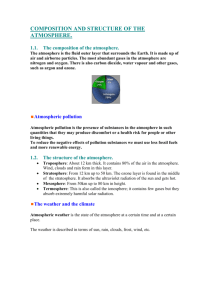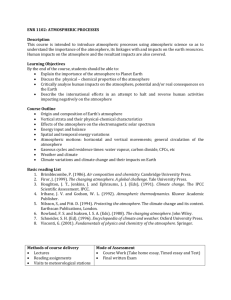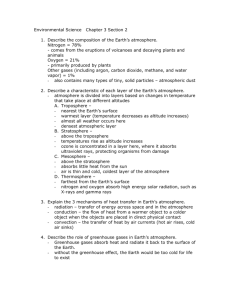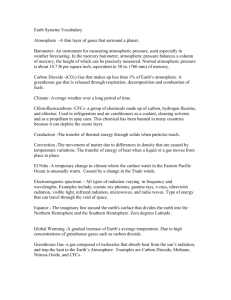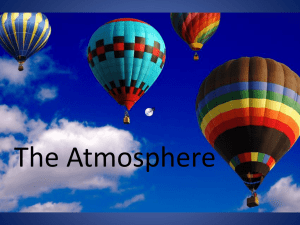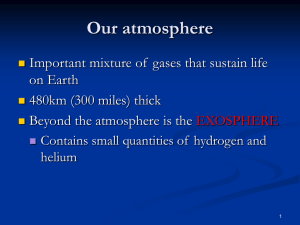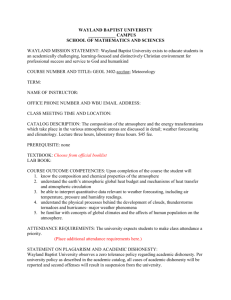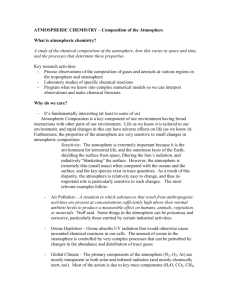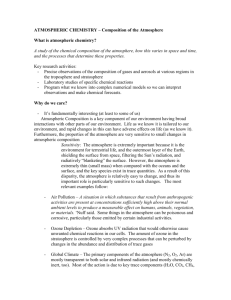Name Class Date
advertisement
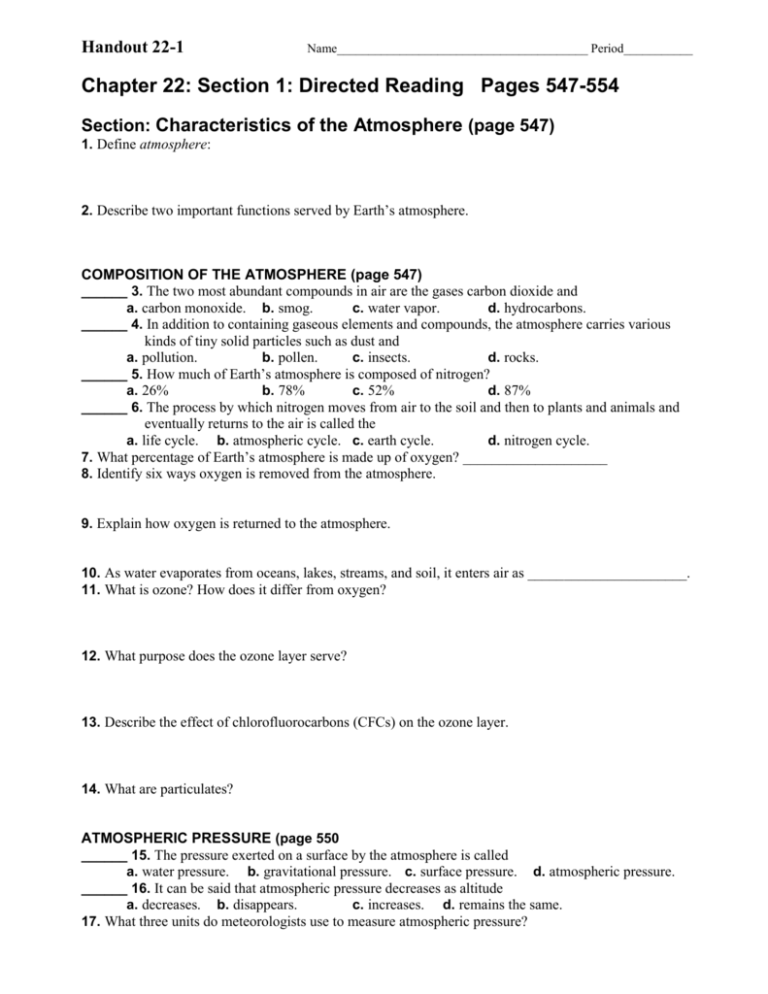
Handout 22-1 Name________________________________________ Period___________ Chapter 22: Section 1: Directed Reading Pages 547-554 Section: Characteristics of the Atmosphere (page 547) 1. Define atmosphere: 2. Describe two important functions served by Earth’s atmosphere. COMPOSITION OF THE ATMOSPHERE (page 547) ______ 3. The two most abundant compounds in air are the gases carbon dioxide and a. carbon monoxide. b. smog. c. water vapor. d. hydrocarbons. ______ 4. In addition to containing gaseous elements and compounds, the atmosphere carries various kinds of tiny solid particles such as dust and a. pollution. b. pollen. c. insects. d. rocks. ______ 5. How much of Earth’s atmosphere is composed of nitrogen? a. 26% b. 78% c. 52% d. 87% ______ 6. The process by which nitrogen moves from air to the soil and then to plants and animals and eventually returns to the air is called the a. life cycle. b. atmospheric cycle. c. earth cycle. d. nitrogen cycle. 7. What percentage of Earth’s atmosphere is made up of oxygen? ____________________ 8. Identify six ways oxygen is removed from the atmosphere. 9. Explain how oxygen is returned to the atmosphere. 10. As water evaporates from oceans, lakes, streams, and soil, it enters air as ______________________. 11. What is ozone? How does it differ from oxygen? 12. What purpose does the ozone layer serve? 13. Describe the effect of chlorofluorocarbons (CFCs) on the ozone layer. 14. What are particulates? ATMOSPHERIC PRESSURE (page 550 ______ 15. The pressure exerted on a surface by the atmosphere is called a. water pressure. b. gravitational pressure. c. surface pressure. d. atmospheric pressure. ______ 16. It can be said that atmospheric pressure decreases as altitude a. decreases. b. disappears. c. increases. d. remains the same. 17. What three units do meteorologists use to measure atmospheric pressure? MEASURING ATMOSPHERIC PRESSURE In the space provided, write the letter of the description that best matches the term or phrase. 18. barometer a. an instrument used to measure atmospheric pressure 19. standard b. instrument that measures atmospheric pressure; changes in atmospheric atmospheric pressure cause the sides of a sealed metal container to bend pressure inward or bulge out 20. aneroid c. 1 atmosphere; the average atmospheric pressure at sea level, equalling barometer 760 mm of mercury or 1,000 millibars LAYERS OF THE ATMOSPHERE (page 552) In the space provided, write the letter of the description that best matches the term or phrase. a. the layer of atmosphere between the troposphere and the mesosphere, in 21. troposphere which temperature increases as altitude increases b. the uppermost layer of atmosphere, in which temperature increases as 22. stratosphere altitude increases c. the coldest layer of the atmosphere, between the stratosphere and the 23. mesophere thermosphere, in which temperature decreases as altitude increases d. phenomena caused by interactions between solar radiation and the 24. auroras ionosphere e. the lowest layer of the atmosphere, in which temperature drops at a 25. thermosphere constant rate as altitude increases TEMPERATURE INVERSIONS (page 554) 26. What is an air pollutant? 27. How do fossil fuels cause air pollution? 28. What is a temperature inversion? 29. What is smog? Chapter 22 Section 1 Review Page 554 1. Describe the composition of dry air at sea level. 2. Identify five main components of the atmosphere. 3. Explain the cause of atmospheric pressure. 4. Identify the layer of the atmosphere in which weather occurs.
